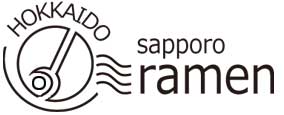Ramen in Hokkaido
There are many local ramen throughout Japan that incorporate the characteristics and food culture of each region!
Here we introduce some popular ramen that have gained a strong following in Hokkaido (Sapporo, Hakodate, Asahikawa, Kushiro, Muroran)
1)Sapporo Ramen<Miso>
・Sapporo became crowded with ramen stores starting with yatai (street stall) ramen stores around 1946-22, just after the end of the war.
・At that time, soy sauce flavored pork bone soup was very popular.
・The store of Senji Nishiyama’s 「Daruma-ken」 and the store of Morito Omiya(Aji no Sanpei), who later developed miso ramen, were also yatai stalls.
・Morito Omiya learned ramen from Kanshichi Matsuda and opened 「Aji no Sanpei」.
・Takayuki Nishiyama spun off the noodle-making department of 「Daruma-ken」 and created thick, curly yellow egg noodles.
・Thus, the original form of 「Sapporo Ramen」 was created from the encounter between Morito Omiya, Senji Nishiyama, and Takayuki Nishiyama.
・One of the main reasons why Sapporo ramen is so tasty is that the noodles are made using high-quality melted snow water from the Teine Mountains.
・It can be said that there are many famous local ramen in places throughout Japan where the water is good.
・In addition to the traditional「Ramen Yokocho」and 「Shin Ramen Yokocho」 there is the Kotoni area where ramen stores with strong individuality gather.
・A new「Ramen Yokocho」will appear where you can enjoy a variety of ramen from Tokyo-style ramen with clear soup to Kyushu-style ramen with rich broth.
・Sapporo is now a market where various types of ramen compete for flavor.
・No matter where the ingredients and flavors come from, if they are cooked in Sapporo’s water and climate, they are made in Sapporo.
・This is Sapporo ramen.
・Sapporo is the city of ramen forever.
※Morito Omiya is the founder of 「Aji no Sanpei」.
2)Asahikawa Ramen<Soy Sauce>
・The soup is very simple soy sauce flavored soup, thin noodles, pork, pickled bamboo shoots, and green onions.
・This is the kind of ramen that has been loved for many years in Asahikawa, a city of 400 ramen stores.
・It started around the same time as Sapporo, around 1947.
・Kumasaburo Kato’s son, Edanao, who used to make handmade buckwheat noodles in Teshiomachi, opened a ramen store called 「Hachiya」.
・In the same year, Yoshiya Murayama of「Aoba」also started his own ramen cart with a large cart.
・These two stores are said to be the beginning of Asahikawa ramen as we know it today.
・In 1989,「Heiseiken」opened in Sapporo, and Asahikawa ramen stores began to open in Sapporo one after another.
・The opening of “Heiseiken” in Sapporo in 1989 triggered an Asahikawa ramen boom, and the ramen became well known in Tokyo and throughout Japan.
・The characteristic of Asahikawa ramen is its soup, which is made not only from pork bones but also from marine products.
・Another characteristic of Asahikawa ramen is the thin noodles made with a low water content to bring out the flavor of the flour.
・These noodles absorb the broth, making the noodles themselves tasty and giving them a unique texture.
・Famous restaurants such as「Hachiya」and「Aoba」are still among the best ramen restaurants in Japan, and they continue to delight ramen fans throughout the country.
・The charm of Asahikawa ramen lies in its authentic taste, which has been developed over many years by the local people.
3)Hakodate Ramen<Salt>
・Hakodate Ramen is characterized by its clear soup and thin, straight noodles.
・Hakodate Ramen is characterized by its light, salt-flavored soup.
・Hakodate ramen is the ramen that most closely resembles the Chinese noodle dish of today’s Japan.
・The Chinese House that still exists in Omachi is a reminder of the exchange between Hakodate Ramen and China.
・Opened in 1908, the building housed a Chinese restaurant called「Rantei」.
・From the Meiji to Taisho periods, Chinese food culture flowed into Omachi through this restaurant, and the roots of ramen were established.
・In the early Showa period, ramen appeared as「shina soba」.
・After the war, ramen started at yatai stalls, just like in Sapporo.
・However, the traditions of Chinese cuisine have been carried over here to the present day.
・Even today, Hakodate is characterized by eating ramen at Chinese restaurants rather than ramen specialty stores.
・The soup is a clear, pork-based broth.
・It is important to control the heat to keep the soup from boiling over low heat and to remove the scum frequently.
・Some restaurants also use vegetables, kelp, and chicken bones.
・The ingredients are simply chashu pork, green onions, and bamboo shoots.
・The noodles have a smooth texture and a clean aftertaste.
